A glass of this wine is the perfect way to welcome spring!
We are thrilled to have had the opportunity to work with Averill Creek Vineyard to create Island Tides, a vibrant Pinot Grigio that perfectly captures Vancouver Island’s coastal terroir. To properly introduce this new wine, we thought it would be fun to follow along a year in the life of Island Tides Pinot Grigio.
January–March 2020
 A wine’s life begins long before the juice starts to ferment, so let’s travel back to winter 2020. Things in the vineyard were pretty slow in the first few months of the year. The Pinot Grigio vines destined for Island Tides were sleeping the winter away, focusing their energy on developing healthy roots that would support them in the growing season ahead. Jon Whitehead, Averill Creek’s vineyard manager, was busy tending to the vines, carefully pruning to ensure they would be able to grow as many healthy grapes as possible.
A wine’s life begins long before the juice starts to ferment, so let’s travel back to winter 2020. Things in the vineyard were pretty slow in the first few months of the year. The Pinot Grigio vines destined for Island Tides were sleeping the winter away, focusing their energy on developing healthy roots that would support them in the growing season ahead. Jon Whitehead, Averill Creek’s vineyard manager, was busy tending to the vines, carefully pruning to ensure they would be able to grow as many healthy grapes as possible.
As the vines slept, their roots grew deep, nurtured by the unique soil in Averill Creek’s vineyards. The Island Tides vines are planted on hillside sites in a local soil known as Royston Qualicum. This soil is full of nutrients left over from ancient glacial deposits that feed the vines without the need to fertilize. The downward slope of these hillsides causes water to drain away from the vines, which allows them to grow deeper and stronger.
April–May 2020
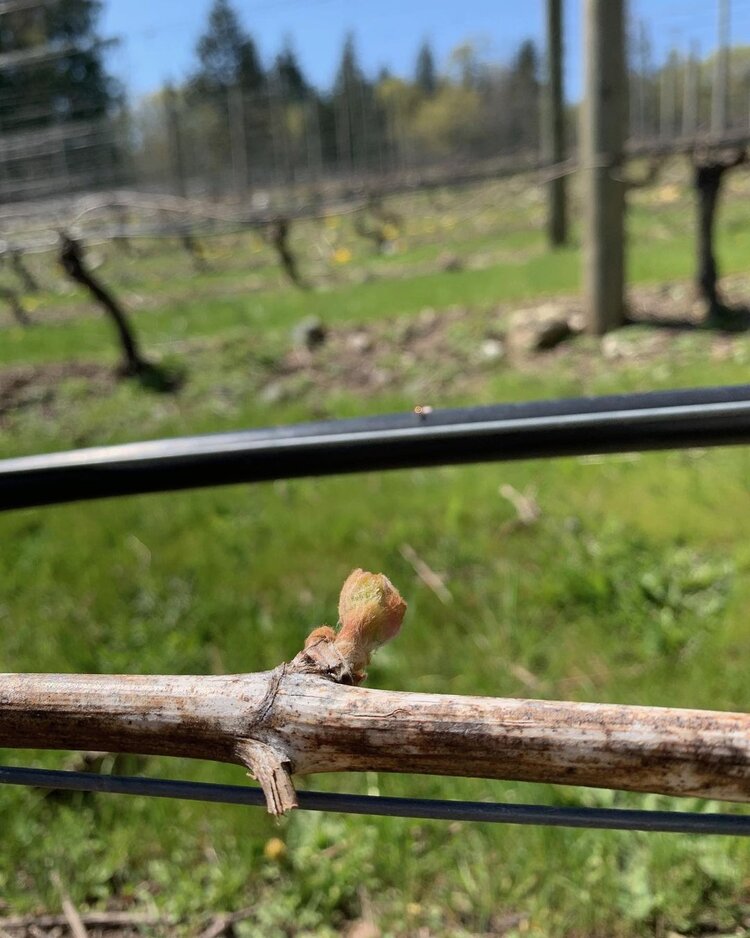 As spring started and the weather began to warm, our vines slowly woke from their slumber. With longer and warmer days, they started the budburst process: each little bud on the vine began to swell until delicate green foliage poked out. Gradually, these buds eventually grew into shoots that spread out long, sprouting leaves, flowers, and eventually clusters of grapes. Pinot Grigio tends to bud and ripen early in the growing season, making it a great match for our cool, coastal climate. As the shoots grew, Jon and the vineyard team carefully tended to the vines, ensuring they grew neatly along the trellis so that the grapes would be exposed to just the right amount of sunlight all summer.
As spring started and the weather began to warm, our vines slowly woke from their slumber. With longer and warmer days, they started the budburst process: each little bud on the vine began to swell until delicate green foliage poked out. Gradually, these buds eventually grew into shoots that spread out long, sprouting leaves, flowers, and eventually clusters of grapes. Pinot Grigio tends to bud and ripen early in the growing season, making it a great match for our cool, coastal climate. As the shoots grew, Jon and the vineyard team carefully tended to the vines, ensuring they grew neatly along the trellis so that the grapes would be exposed to just the right amount of sunlight all summer.
June–July 2020
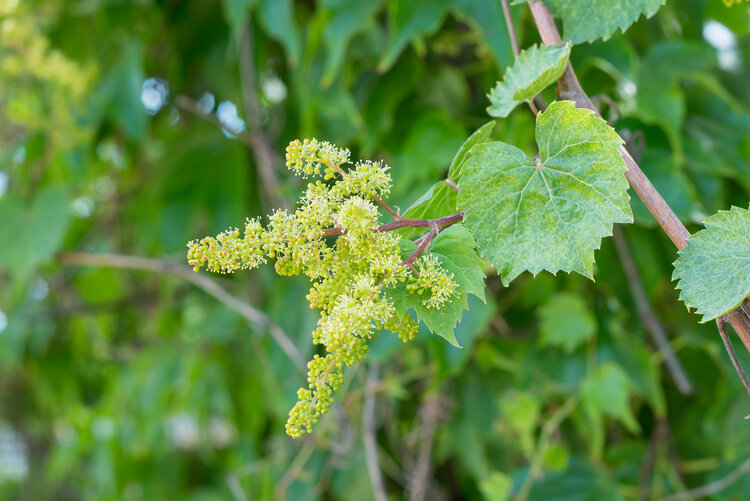 As summer approaches, pretty little flowers began to dot the vines hinting at the future ahead. In early July, these little flowers gave way to tart little berries which slowly grew bigger as the season progressed. Jon and the crew carefully pruned leaves all summer long to ensure the right amount of air circulation, light exposure, and energy was focused on the grapes.
As summer approaches, pretty little flowers began to dot the vines hinting at the future ahead. In early July, these little flowers gave way to tart little berries which slowly grew bigger as the season progressed. Jon and the crew carefully pruned leaves all summer long to ensure the right amount of air circulation, light exposure, and energy was focused on the grapes.
The climate of Cowichan Valley is well suited to Pinot Grigio. The Coast Salish First Nations named this area Quw’utsun’ (Cowichan), which translates to ‘warms lands,’ because the valley has warm, dry summers and very mild winters. In fact, it is Canada’s only Mediterranean climate, which grape vines love! And while the sunlight isn’t particularly intense here, the relatively high latitude, of just under 50°, means summer days are long which makes for ripe grapes with complex flavours and aroma. Because the grapes develop slowly, they can maintain the crisp acidity that provides the fresh and vibrant mouthfeel in the wine.
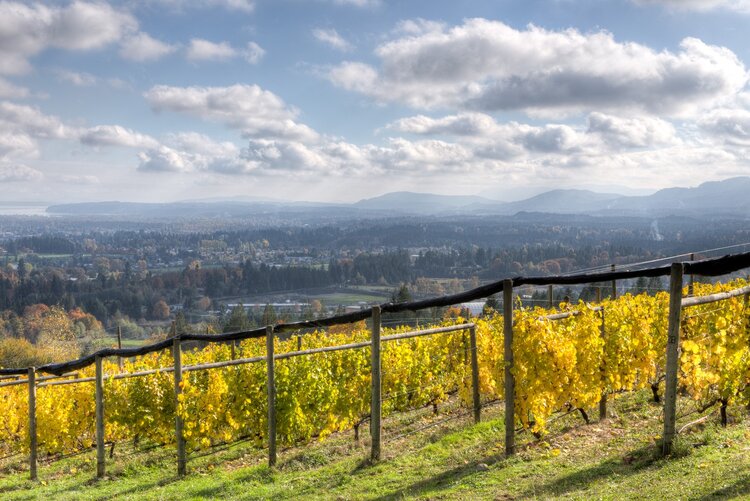 The southeast facing slope of Averill Creek’s vineyards is perfectly positioned to receive as much sunlight and warmth as possible as the grapes grow and swell. It also means that when temperatures drop in early spring or fall, cool air will flow down the hill away from the grapes, providing some protection from frost.
The southeast facing slope of Averill Creek’s vineyards is perfectly positioned to receive as much sunlight and warmth as possible as the grapes grow and swell. It also means that when temperatures drop in early spring or fall, cool air will flow down the hill away from the grapes, providing some protection from frost.
The neighbouring Prevost Mountain and old-growth forest cause slight differences in shade and micro-climatic conditions for Averill Creek’s vineyards. Winemaker Brent Rowland explains that this causes each plot of vines to ripen a bit differently, providing a range of flavour and complexity for him to play with when it comes time to blend juice from the various vineyards.
Island Tides Pinot Grigio is sourced from some of the cooler sites at Averill Creek. The slightly cooler growing conditions of these grapes make for a leaner wine with an especially crisp and refreshing feel.
August–September 2020
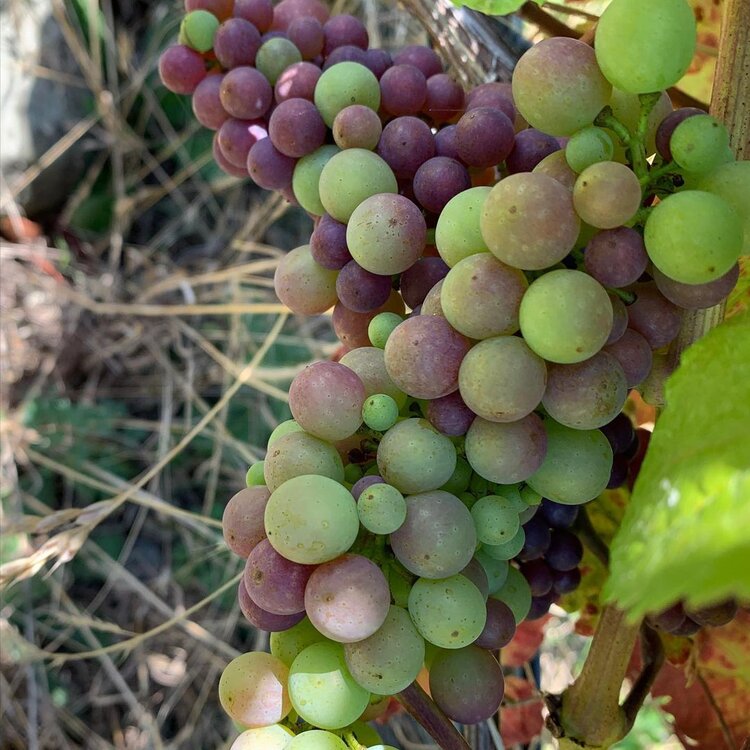 Veraison, when grapes change colour, started in late summer. This marked the point when the vines shifted focus from berry growth to flavour development. Hints of the final product were starting to show; an exciting time in the vineyard! The grapes continued to mature through the end of summer and into early fall. Brent, Jon, and the whole Averill Creek crew watched closely, getting ready to harvest at exactly the right time.
Veraison, when grapes change colour, started in late summer. This marked the point when the vines shifted focus from berry growth to flavour development. Hints of the final product were starting to show; an exciting time in the vineyard! The grapes continued to mature through the end of summer and into early fall. Brent, Jon, and the whole Averill Creek crew watched closely, getting ready to harvest at exactly the right time.
Sustainable farming has been an important part of Averill Creek’s philosophy since its inception. They employ dry-farming techniques and are exploring more organic practices that better promote soil health and are headed towards an organic certification in coming years.
October 2020
The 2020 vintage was a challenging one, for more reasons than one. June was unusually cold and wet, which delayed the ripening process and meant grapes were hanging later in October than usual. But just as the start of the season was surprisingly cool, the end was surprisingly warm. A dry and sunny October meant that the grapes could catch up in ripening despite their late start. So, waiting patiently to harvest paid off! The quality of fruit is exceptional, despite a challenging year.
Harvest time finally arrived on October 20 and 21. As soon as everything came into alignment, the team sprang into action, carefully hand-picking the grapes, taking care not to damage them and compromise quality. The crew held off on picking late enough for excellent flavour in the grapes, but not so late that they lost elegance and freshness.
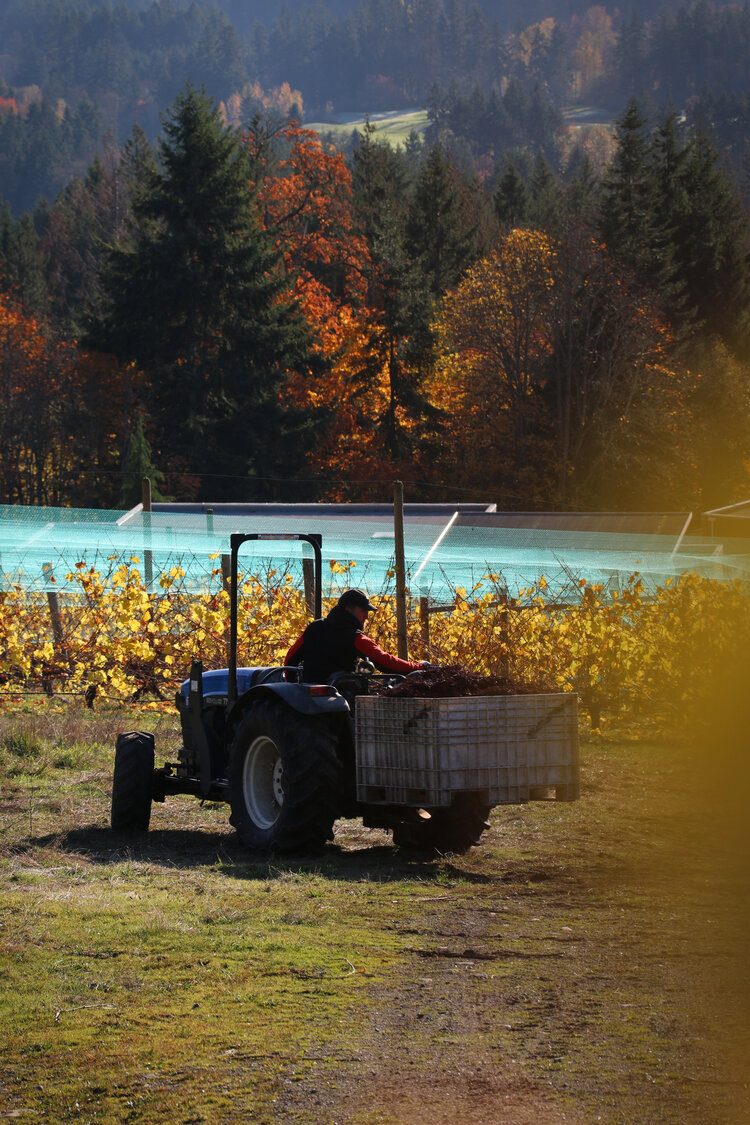
Once the harvest was complete, the vines went back into dormancy, again using the winter months to rest and recover before the 2021 vintage. And as the vineyard fell quiet again, it was time for the winery to kick into action.
The juice was transferred to stainless steel tanks for fermentation and aging. These tanks preserve the fruity freshness in the wine. Brent didn’t use commercial yeasts or any other additives during fermentation, opting instead to allow ambient yeasts to ferment the juice slowly which added to the unique complexity of the wine.
November 2020–February 2021
After fermentation was complete, the wine was left to rest in the tank for a few months giving it time to develop structure and a slight saline character. The wine was very gently filtered right before bottling, and nothing was added except for a very small amount of sulfur to ensure freshness and stability.
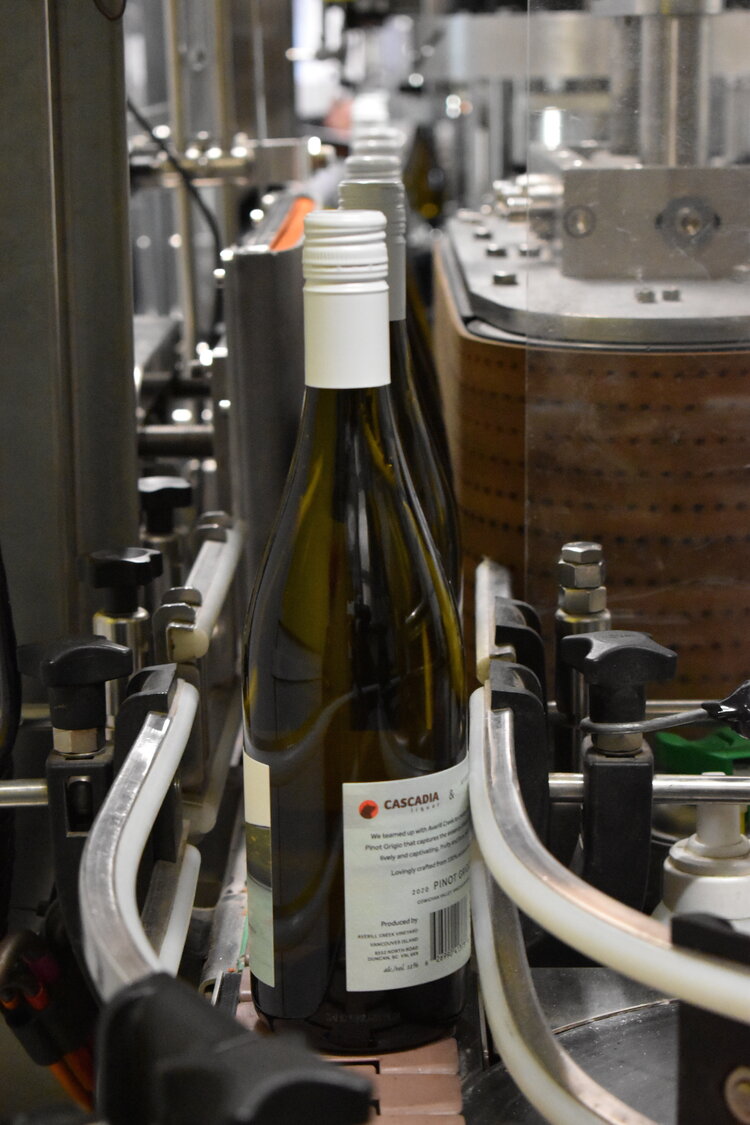 At long last, all the hard work of tending to the vines and coaxing the juice into wine paid off, and Island Tides was bottled on February 23, tasting just like a ripe pear on a windswept beachside afternoon. After a brief rest post-bottling, Island Tides Pinot Grigio is ready to be enjoyed!
At long last, all the hard work of tending to the vines and coaxing the juice into wine paid off, and Island Tides was bottled on February 23, tasting just like a ripe pear on a windswept beachside afternoon. After a brief rest post-bottling, Island Tides Pinot Grigio is ready to be enjoyed!
This is a fresh and dynamic wine that embodies the terroir of Averill Creek and the spirit of a coastal wine region. It is crisp and uplifting, yet rounded and enduring. Bright, fruity, and floral. Alive with tactile acidity and mouth-watering tension. Pair with good times and close friends.


Island Tides Pinot Grigio
Zesty and fruity with notes of pear, white flower, and meyer lemon.


Averill Creek Pinot Noir
Fresh and floral with spicy notes, silky tannins, and elegant structure.







